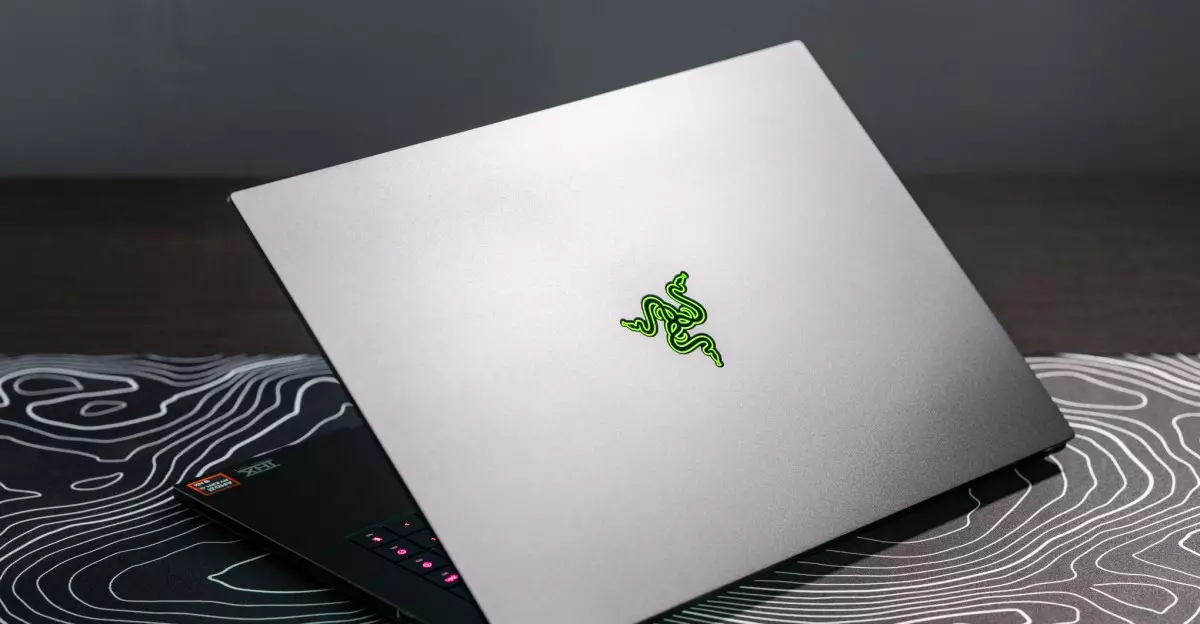In the competitive landscape of gaming laptops, Razer has consistently positioned itself as a frontrunner with its Blade series. The latest entrant, the Razer Blade 16, presents a compelling case for gamers and creative professionals alike, especially with the inclusion of the formidable Nvidia RTX 5090 GPU. The design ethos has shifted back toward a thinner and more lightweight profile, creating a device that appears to bridge the gap between high-performance gaming rigs and everyday laptops, akin to the MacBook Pro but with a gaming twist. While this device impresses at first glance, nuanced critiques reveal that its path to excellence is not without pitfalls.
The primary allure of the Blade 16 lies in its sleek form factor. Shedding 7mm in thickness and 0.8 pounds in weight from its predecessor, the new model is readily portable, making it an appealing choice for users on the go. However, one cannot help but wonder whether the aesthetic benefits come at a cost. Have the engineers found a way to sustain efficient thermals in such a compact design? Initial impressions suggest that while the aesthetic draw is strong, practical performance during extended use warrants further exploration.
Display: A Visual Feast with Some Caveats
The Blade 16’s 16-inch OLED display shines with a resolution of 2560 x 1600 and a smooth 240Hz refresh rate, proving it to be an excellent canvas for both gaming and productivity. The color accuracy and dynamic range offered by the display elevates gaming experiences, allowing titles to leap from the screen with vivid detail. However, minor inconveniences can detract from the overall experience, especially concerning the placement of the keyboard and trackpad.
While Razer has made strides in the input department, the new macro key layout on the keyboard can prove to be a misstep. Instead of intuitive access to commonly used features, the positioning often leads to frustrating misclicks. It raises the question: are manufacturers truly in tune with the user experience, or do aesthetic innovations overshadow practical usability? The inverted-T arrow key layout remains a gold standard that many Windows laptop makers fail to embrace, leaving users to grapple with unnecessary complexities.
Performance: Unraveling the RTX 5090 Enigma
In terms of raw specifications, the inclusion of the RTX 5090 GPU signals a leap toward cutting-edge performance, particularly evident in gaming scenarios enhanced by DLSS and frame generation. Early testing suggests that this GPU not only excels in gaming but also demonstrates improved efficiency compared to the previous generation, boasting roughly 20% better power management. Yet, the optimism surrounding battery life is tempered by the stark reality of performance when the laptop is not gaming.
The Blade 16 struggles significantly with daily productivity tasks, often failing to last a full workday on a single charge. Despite utilizing integrated graphics to offload some processing duties, an example of the high-powered Ryzen AI 9 HX 370 CPU offered by competing laptops raises concerns about this device’s real-world viability as a comprehensive solution for both gaming and work. While it’s easy to get lost in the allure of high specifications and mesmerizing performance benchmarks, practical longevity is equally vital for those who cannot afford to be tethered to a wall outlet throughout their day.
Price Tag: The Ultimate Dilemma
Perhaps the most contentious aspect of the Razer Blade 16 is its price, soaring to $4,499.99 for the highest configuration. This figure prompts a stark reassessment of value, especially when positioned against the backdrop of alternative options. Razer has crafted a beautiful machine with extraordinary capabilities, yet when faced with the reality of performance hiccups and battery struggles, one wonders if it’s wise to invest so heavily in a single device.
An alternative of purchasing a capable MacBook Pro for creative workflows—renowned for its reliability and endurance—accompanied by a robust gaming laptop for far less than the total outlay for the Blade 16, presents a compelling case for prudent consumers. The allure of “one device to rule them all” is enticing, yet the practicality and economy of dual-device ownership cannot be ignored.
In the end, the Razer Blade 16 emerges as a complex blend of beauty, power, and practicality. Its design appeals to gamers and professionals, but lingering concerns regarding efficiency and usability remind us that innovation, while admirable, must harmonize with user needs to achieve true excellence. The ongoing testing phase promises further insights into this ambitious laptop’s capabilities as it grapples with the challenges of sustaining performance while delivering a superior user experience.

